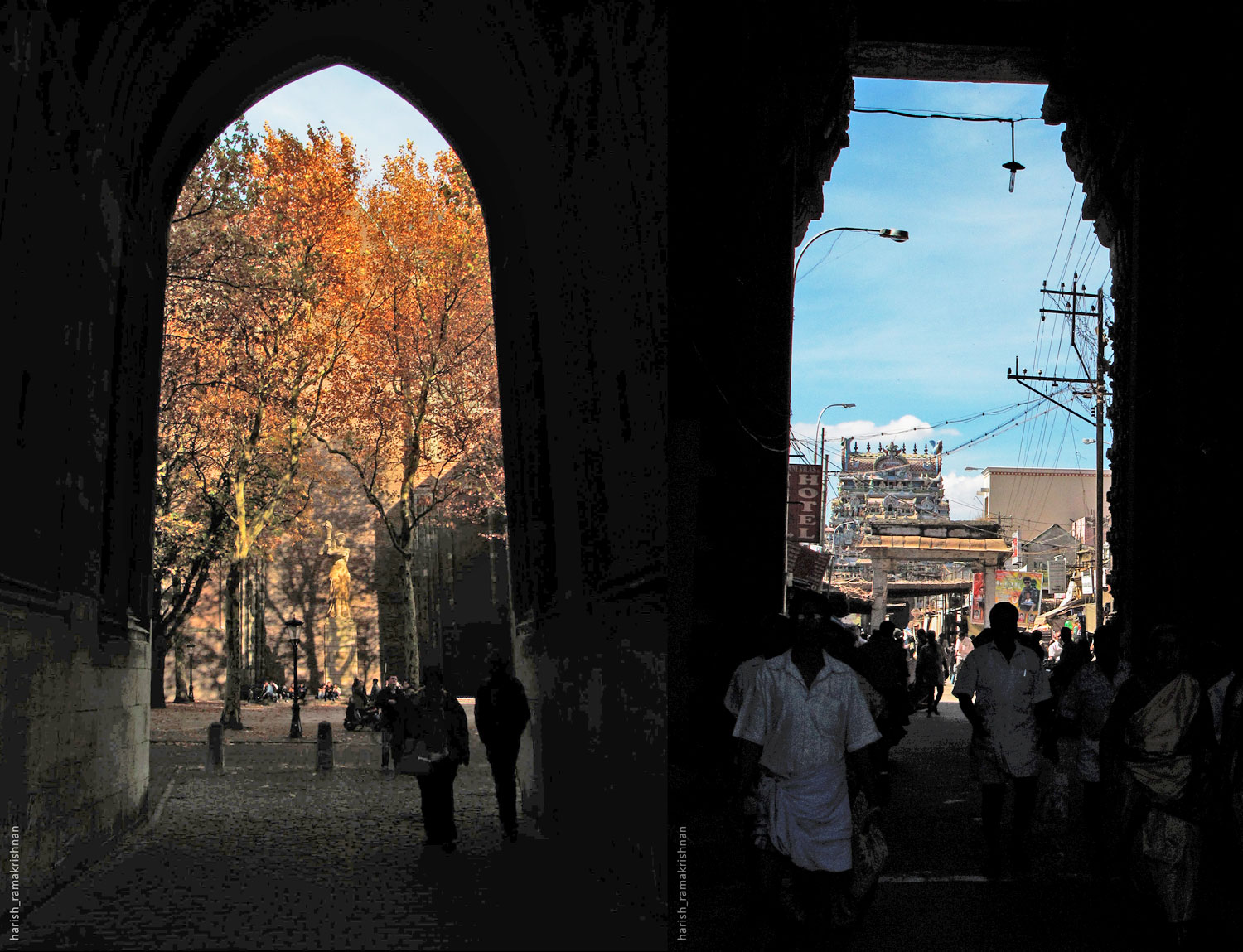As an architecture student, my camera tends to focus on the cultural differences between different societies. Nevertheless, what I found at Utrecht’s Dom tower was a pleasant and subtle analogy to an Indian counterpart.
As I clicked this photo, I was transported back to a place close to my heart, the temple town of Srirangam, South India. A magnificent town built over several centuries on Srirangam, a river island, which today remains a major religious and cultural centre. The Rajagopuram, the tower’s largest entrance, wasn’t finished in its day, although it was recently, but not to its original design.
Similarly, Utrecht’s Dom Tower is a free-standing structure, owing to the collapse of its unfinished nave, formerly serving as the entrance to the Gothic Cathedral of Saint Martin, a beautiful structure that still exists, although separated from this tower by a few metres. These two structures of yore, both unfinished gateways, built 8,000 kilometres and two centuries apart, have been preserved and adapted to today’s cultural context. Utrecht’s gateway to a quiet calm (on the left), and India’s to clamorous chaos (on the right), merged together in photo form as similar gateways but to contrasting cultures.
Delft Integraal 2008-4
“At the Design Week event in Eindhoven, four industrial design students received the Toon van Tuijl Design Award for their MoonLight solar-powered lamp.”
Many families in Cambodia do not have access to electricity. They still live in the dark when night falls or light their homes using a can filled with kerosene. “That’s very dangerous. If it falls it could set the often wooden house on fire. The kerosene is also very bad for their health,” says industrial designer, Doortje van de Wouw, who currently works at Philips in Drachten.
Two years ago she and three other students designed the solar lamp, MoonLight, as an alternative for the kerosene light. “We went to Cambodia to see how the people lived. We found out that they prefer to use the lamp in different rooms and even take it outside; therefore, we attached a cord to the lamp, so they could hang it on a nail in the wall and carry it around their neck.”
The lamp is charged by attaching it, via a cord, from inside the home to a small solar panel on the outside of the house. “They therefore do not have to place their lamp outside, as it’s a very valuable object to them.”
So far Kamworks, the company the students designed the lamp for, has sold a couple of thousand MoonLights. “We aim to sell more than 50,000,” says Jeroen Verschelling (Kamworks) on the phone from Cambodia. “By selling more we could reduce our production costs, but in order to do so we have to make the lamps cheaper. Currently the lamp costs 25 dollars, and that’s a lot of money for rural Cambodians.”
Consequently, Cambodians can also rent a MoonLight. “Everyday people spend 8 cents on kerosene. We set up a program in which they pay the same amount to rent a MoonLight. I’ve heard that people use it in the most fascinating ways: to catch snails and frogs and to find cattle that ran away at night.”
There’s a big market for MoonLight, Verschelling adds. “Eighty percent of the almost 15 million people living in Cambodia do not have access to electricity. Solar power is a great way for them to get energy. We have also developed a solar home kit and a home system, where people could attach lamps, a radio and/or television. After 6 p.m. it’s completely dark in rural areas. People very badly want to have a television, which gives them a window to the world. We’re currently also expanding our cooperation with a micro-finance institute, so the villagers can buy the home kit or system.”



Comments are closed.